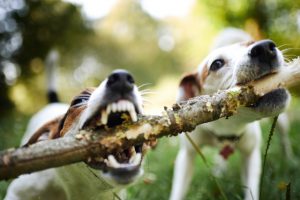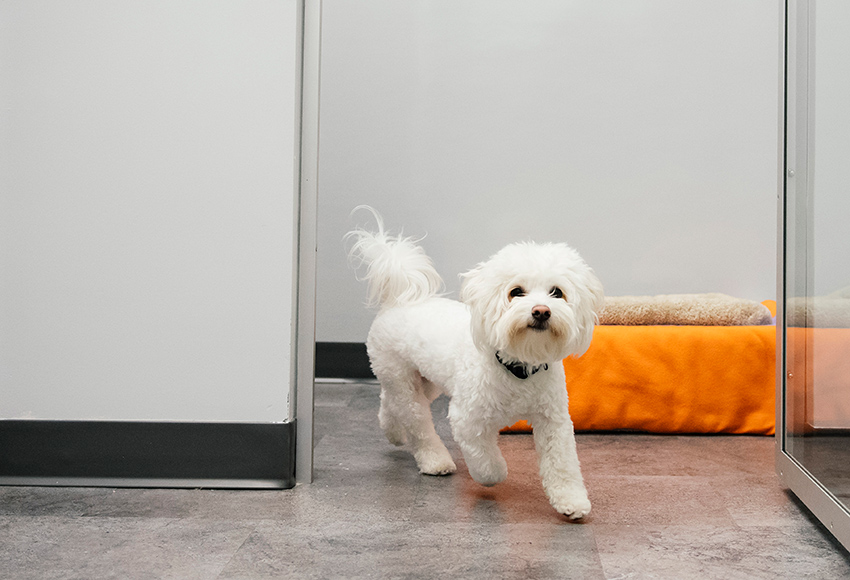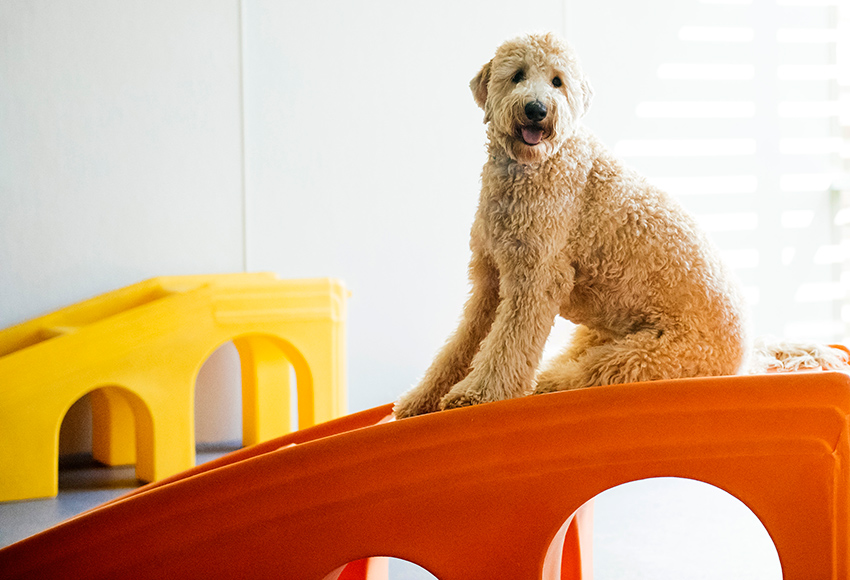Dog Play Styles
Dog Play Styles: Are They Playing or Fighting?

As a Houston dog boarding facility, we have to understand different dog play styles. We often have queries from pet owners about dog fights and how to handle aggressive behavior. While we report any situations to individual owners, we think it is important for anyone considering dog boarding or dog daycare to understand dog play styles.
Dogs love to play with other dogs, and body-slamming or a game of chase can be a normal type of play. Even some small dogs like a Chiweenie will prefer a fun game with large dogs like a golden retriever from time to time. It’s okay to allow them to enjoy chase or play tug so long as the play behavior remains playful.
Understanding Dog Play Styles
When two dogs are wrestling, it can seem too rough or aggressive to pet owners. Dog play styles can include growling, snarling, slamming, and biting each other’s necks. How do you know when to intervene? How do we know whether dogs are playing or fighting?
This is a common dog play style. Oftentimes, puppies play with their siblings as soon as they open their eyes. From then until they go off to separate homes, they spend the majority of their days wrestling with one another.
This is a critical time for socialization because it’s when they learn to control themselves. They also learn bite inhibition and manners for dealing with other dogs. It’s natural for puppies to make mistakes as they learn. However, this dog play style is good exercise and socialization.
As pet owners, it’s important to learn how to tell the difference playing and a real fight between adult dogs. Older dogs with dog training experience may enjoy playing in many types of ways. Neck biting might seem dangerous, but you may have nothing to worry about.
Behaviors That Say “It’s Okay”
- A big grin
- Exaggerated, bouncy movements
- The “play bow” – front end down and rear in the air. Oftentimes, this means the dog wants to initiate play.
- Loud, exaggerated growling and snarling
- Going back for more. Even the dog that goes submissive doesn’t always want to stop playing. Likely, they will take turns with play-fighting behaviors.
- Voluntary vulnerability. Usually, dogs will “fall” down and expose their bellies, allowing themselves to be caught.
“This Is Not a Game!!”
- One dog tries to get away, and the body language is not happy or bouncy. If the tail is tucked, they might not be having fun.
- Stiff bodies. The hair on a dog’s upper back is up. Note: This is harder to notice in long-hair dogs.
- Ears pinned back with lips curled back, snarling. No big, silly smile.
- Closed mouth, curled lip with a low warning growl. Oftentimes, these sound less scary than play growling.
In a dog fight, the encounter is often brief. Likely, the “loser” will leave for another area and will not return to play. Regardless, it’s important to intervene and ensure separation.
How to Ensure Safety in Dog Play Styles
- Not all dogs are meant for the dog park. That’s okay. Some breeds take offense quickly and are better off at home with you or a dog friend they know well.
- Do not allow dogs to gang up on a puppy or a single dog. Even when the dog is not hurt, this is a bad experience. It can traumatize that dog and make cause a fearfulness that is hard to unlearn.
- Keep food and toys away. Dogs can be possessive of their food and belongings. Even small things might be worth fighting for them.
Know Your Dog Play Styles and Have a Plan
Dog play styles are often quite similar, and many dogs are open to wrestling. However, it is important to keep an eye on your dog whenever you visit a place with other animals. Should your dog get into a fight, DO NOT attempt to separate the dogs with your body. They may try to bit you, and there are safer ways to break up a dog fight.
Loud noises can distract the dogs. A small air horn might do the trick and can be good to have on-hand. If there is a hose nearby, sprinkling water on their heads might snap them out of it. If a dog fight breaks out at your home, find something big and flat to put between the dogs, such as a piece of plywood.
The best way to avoid a fight is to recognize the signs of potential conflict in your dog and act quickly. Calmly separating the dogs before a situation escalates allows everyone to continue having a good time.






